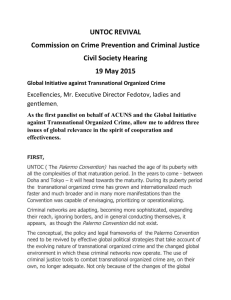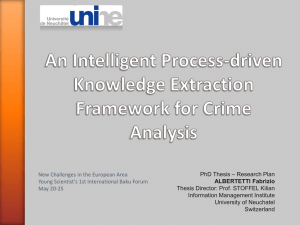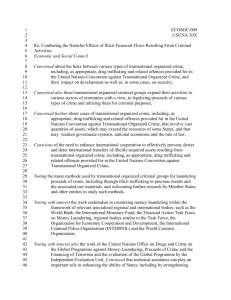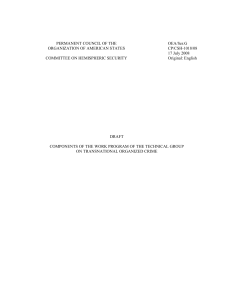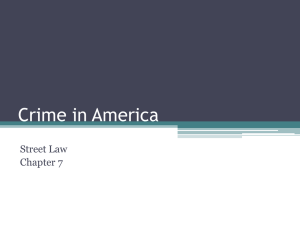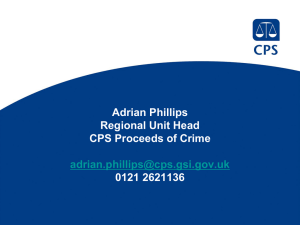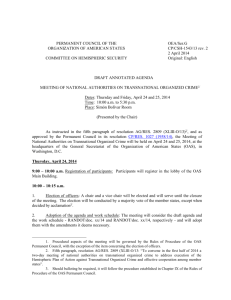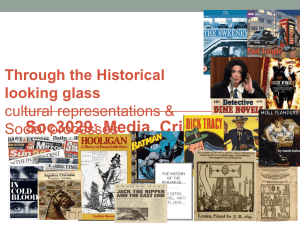PPT
advertisement
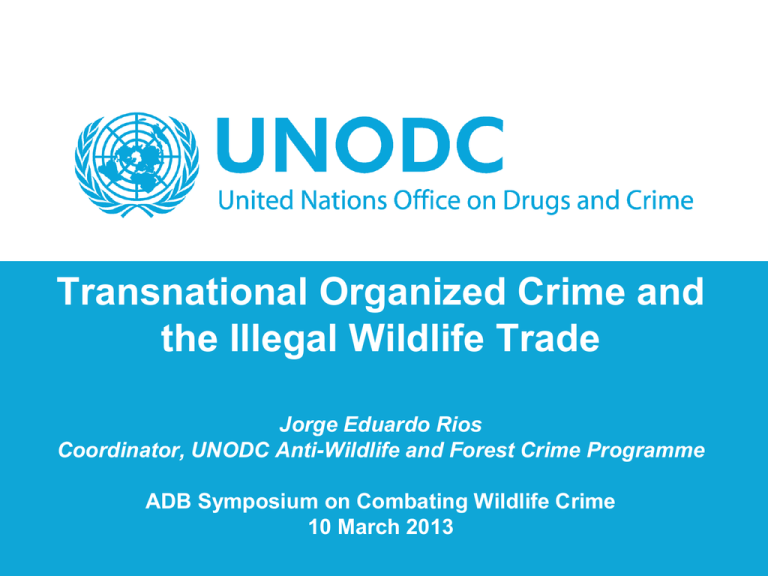
Transnational Organized Crime and the Illegal Wildlife Trade Jorge Eduardo Rios Coordinator, UNODC Anti-Wildlife and Forest Crime Programme ADB Symposium on Combating Wildlife Crime 10 March 2013 What is a transnational organized crime? United Nations Convention on Transnational Organized Crime A structured group of three or more persons In order to obtain financial or material benefit These crimes are planned/committed in more than one country Acting together with the aim of committing one or more serious crime (max. deprivation of 4 years) Thank you! Jorge Eduardo Rios UNODC Anti-Wildlife and Forest Crime Programme Jorge.rios@unodc.org Trafficking in elephant ivory • January 2013: Hong Kong Customs seized 779 tusks (1,000 kg, worth $1.5m), smuggled by sea from Kenya via Malaysia. • September 2011: Malaysia Customs seized 695 tusks originated in Tanzania and directed to China. Trafficking in rhino horns • November 2011. Hong Kong Customs seized 33 horns from South Africa, directed to China or Vietnam What drives this trade? • High demand (ornament, traditional medicines, status) wealthy markets in Asia, Europe, USA, Middle East • No stigma associated to consumption • Low risk of detection and conviction, low penalties • High revenues for the traders: • Poverty and lack of alternative livelihoods drives poaching in countries of origin Who are the smugglers? • • • • • • Various nationalities involved Traders with specialized knowledge Large use of middlemen/facilitators Poachers are often occasional actors Underground role of retailers Complicit public officials How is the smuggling conducted? • • • • • • Trans-boundary in nature Not one mafia, but many networks Highly dynamic and competitive Sophisticated concealment and disguise techniques Increasing role of internet High level corruption (white-collar crime) Benefits of considering wildlife crime a “serious” crime? • Higher level of penalties acting as deterrent (wildlife crime is a low risk/high profit-crime) • Higher level of convictions • Increased sophistication of investigative techniques (electronic surveillance e.g. telephone tapping) • Increased level of international cooperation (both law enforcement and judiciary) Conclusions • Illegal Wildlife Trade is a transnational organized crime • Wildlife Crime has to be considered as a serious crime • Adequate legislation, highly trained judiciary and prosecution are required • Front line officers need support • transnational organized crime requires a coordinated transnational response--International Consortium on Combating Wildlife Crime (ICCWC)


